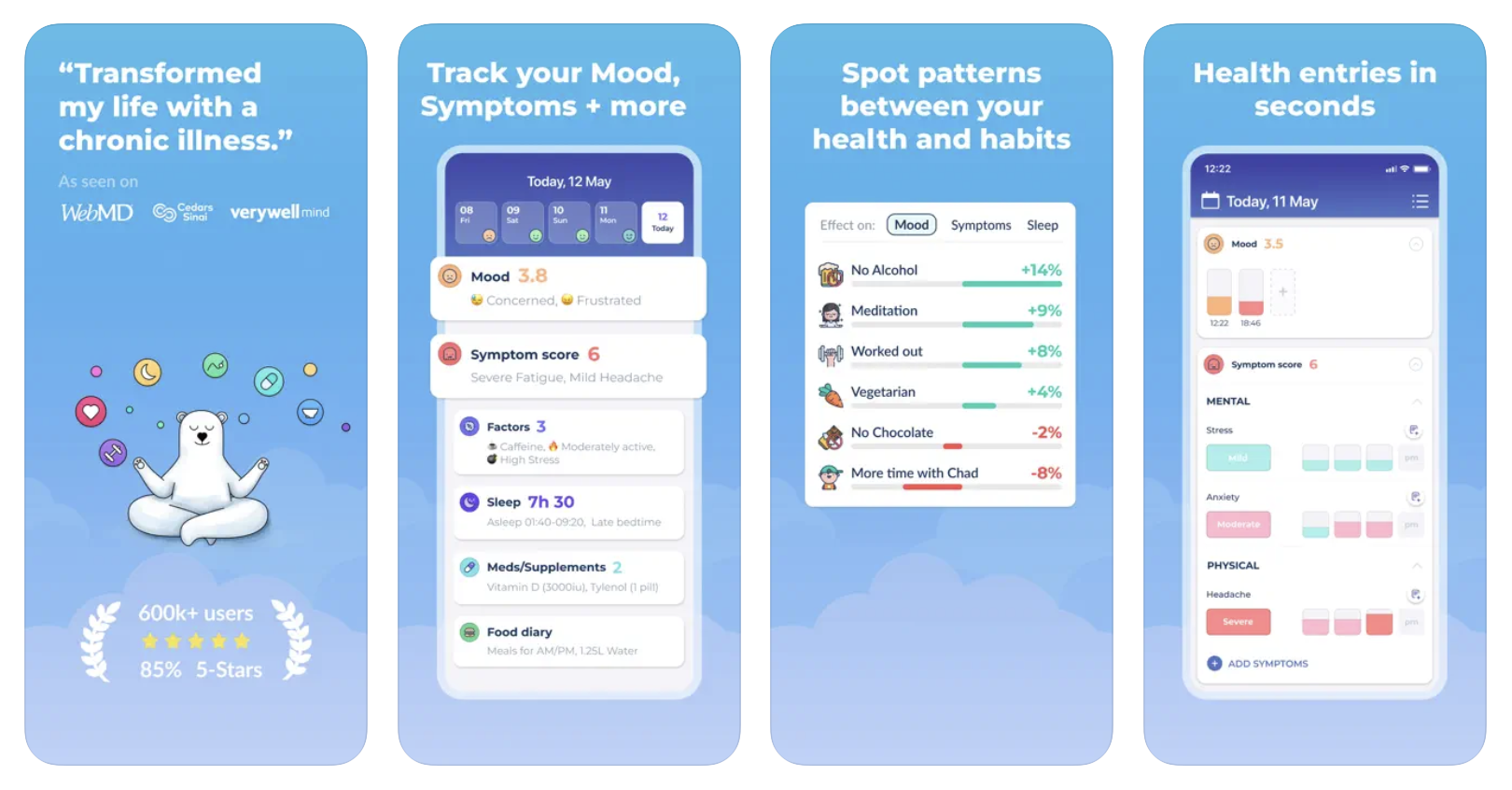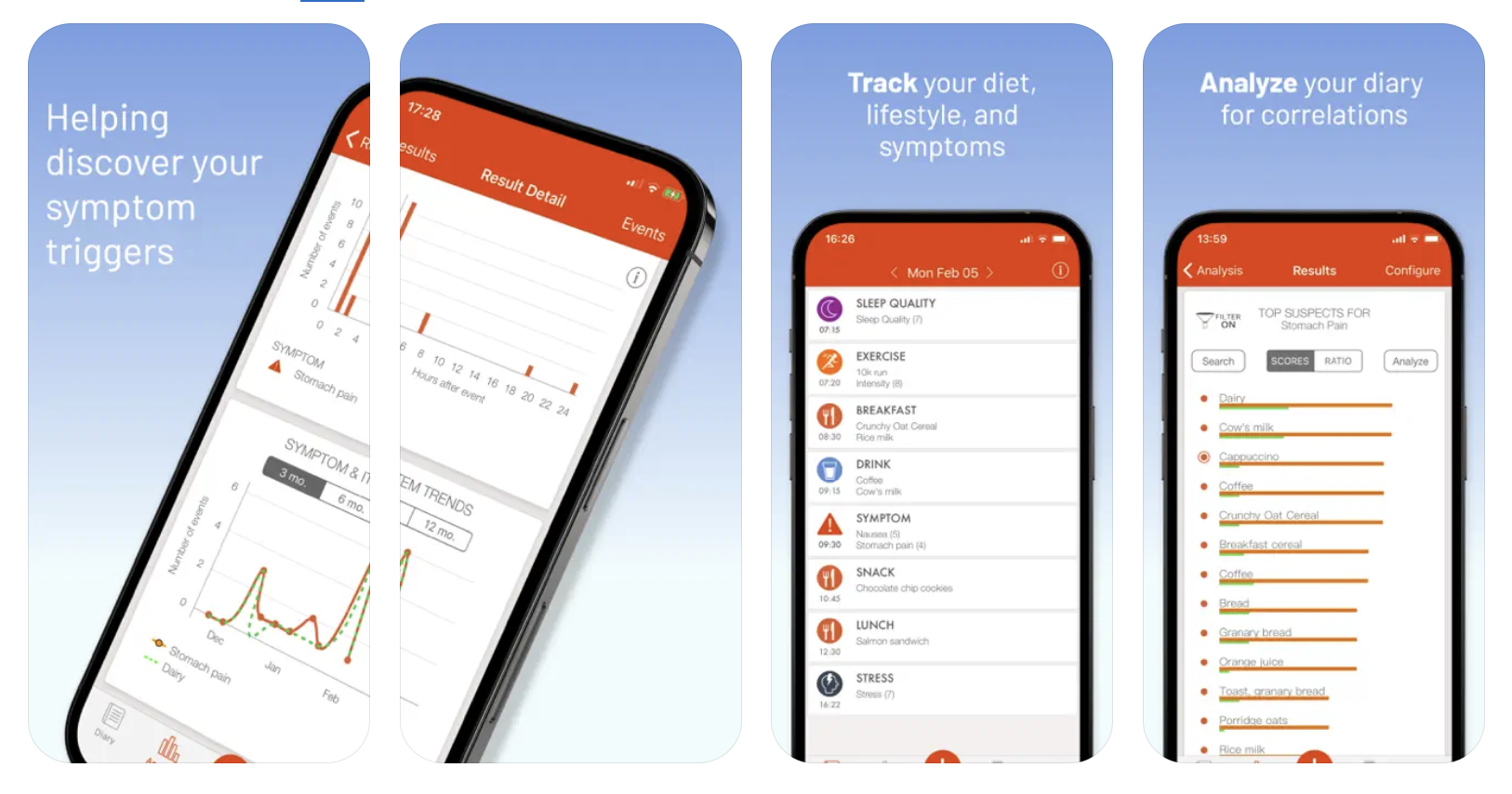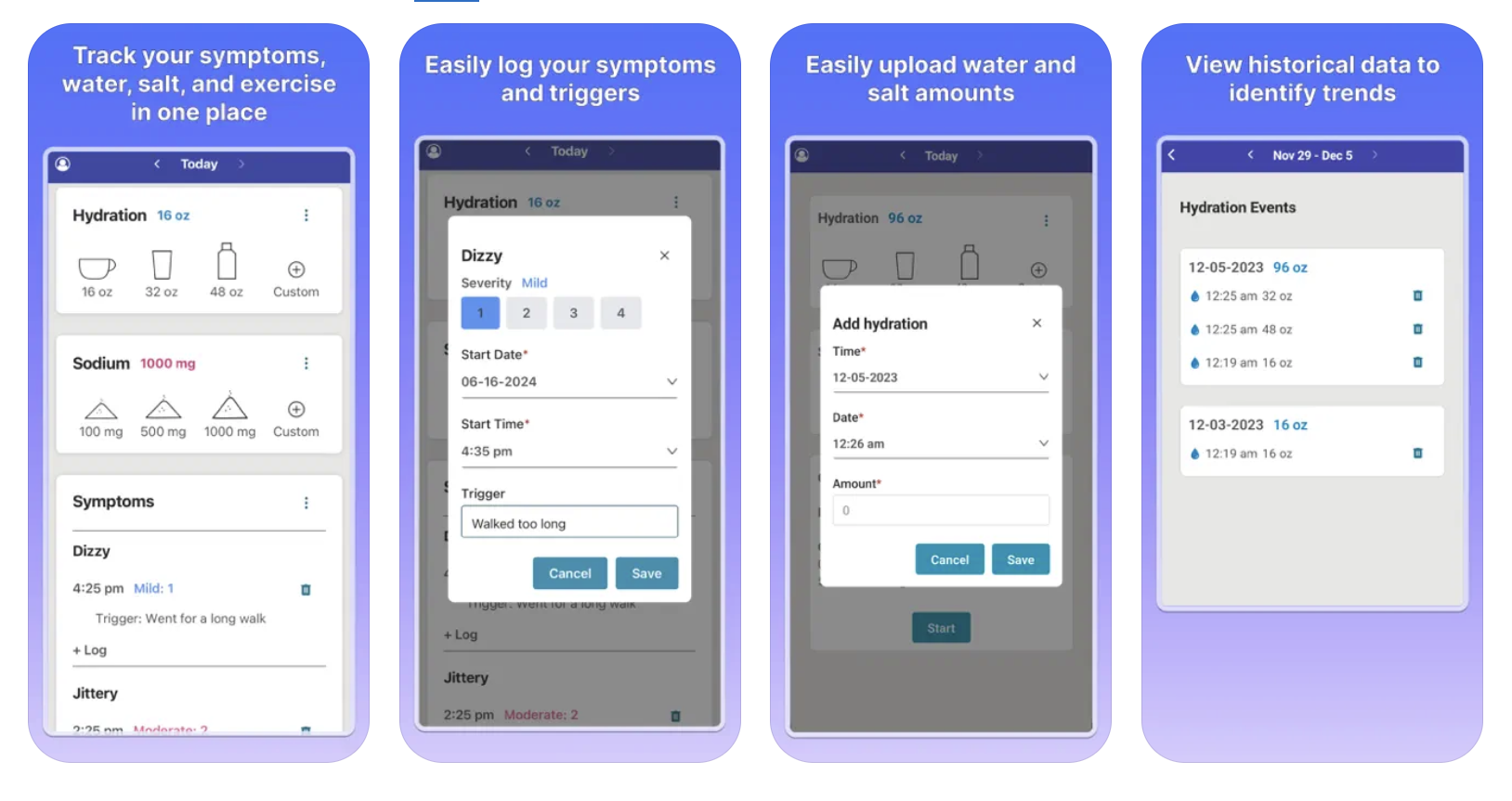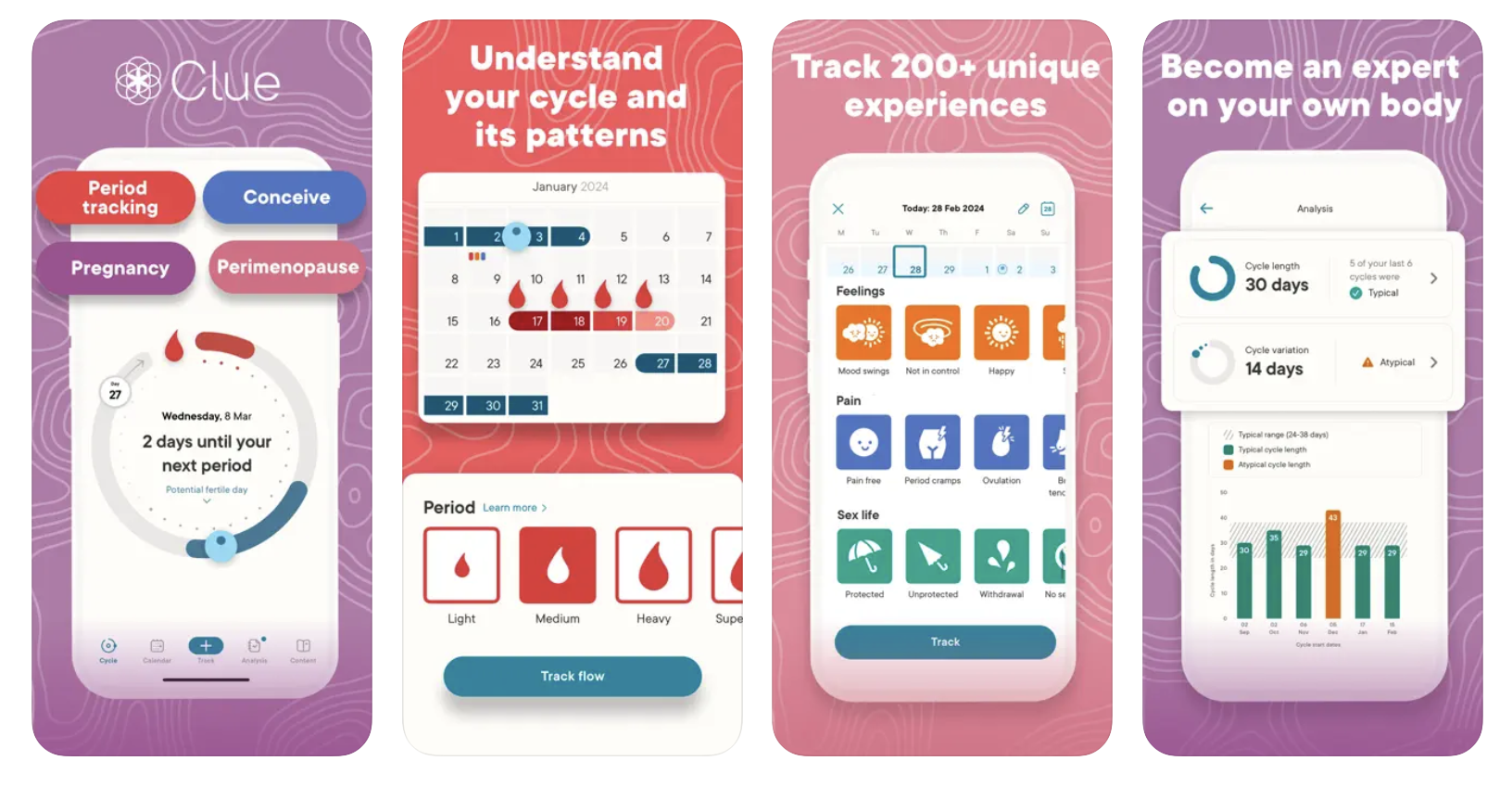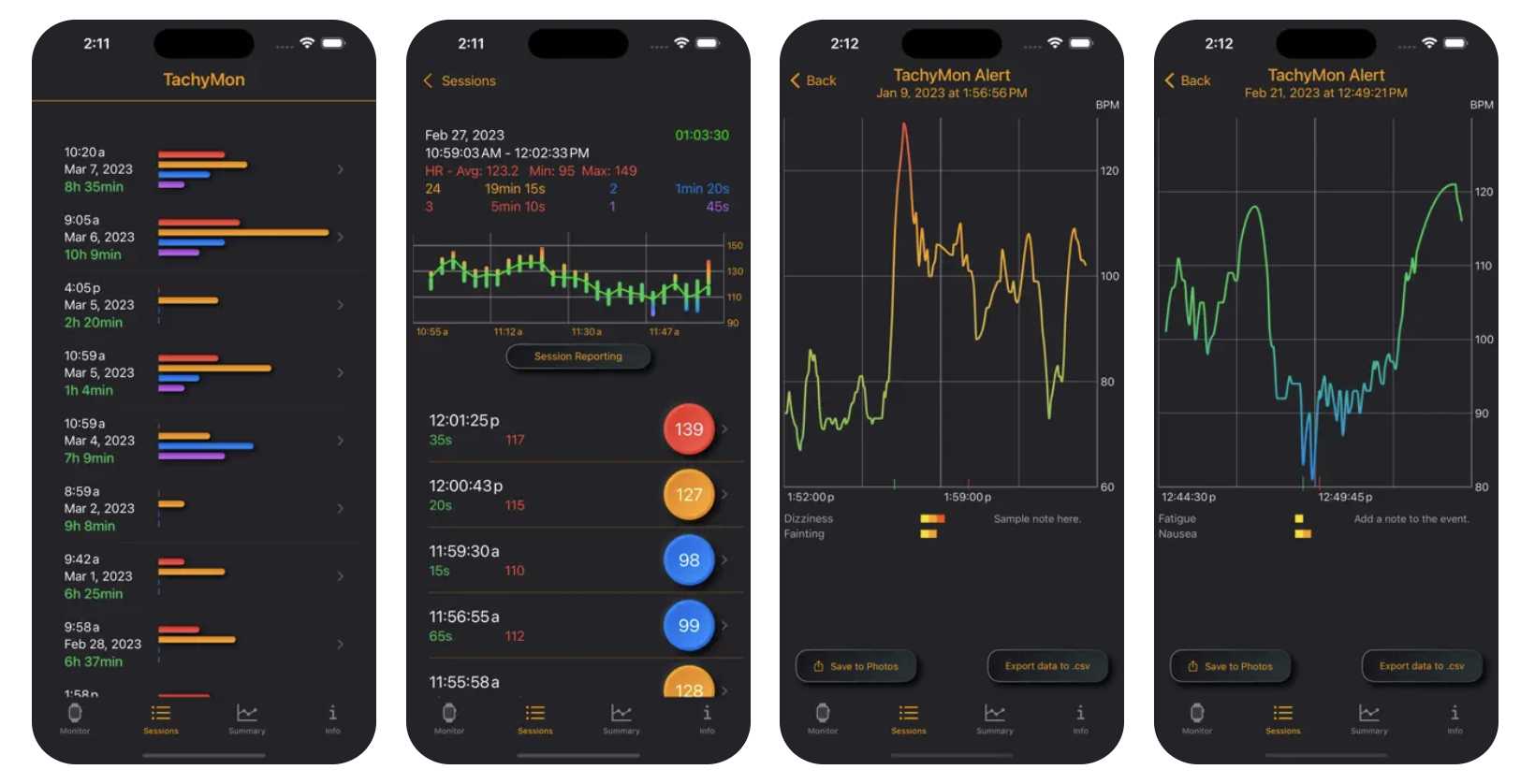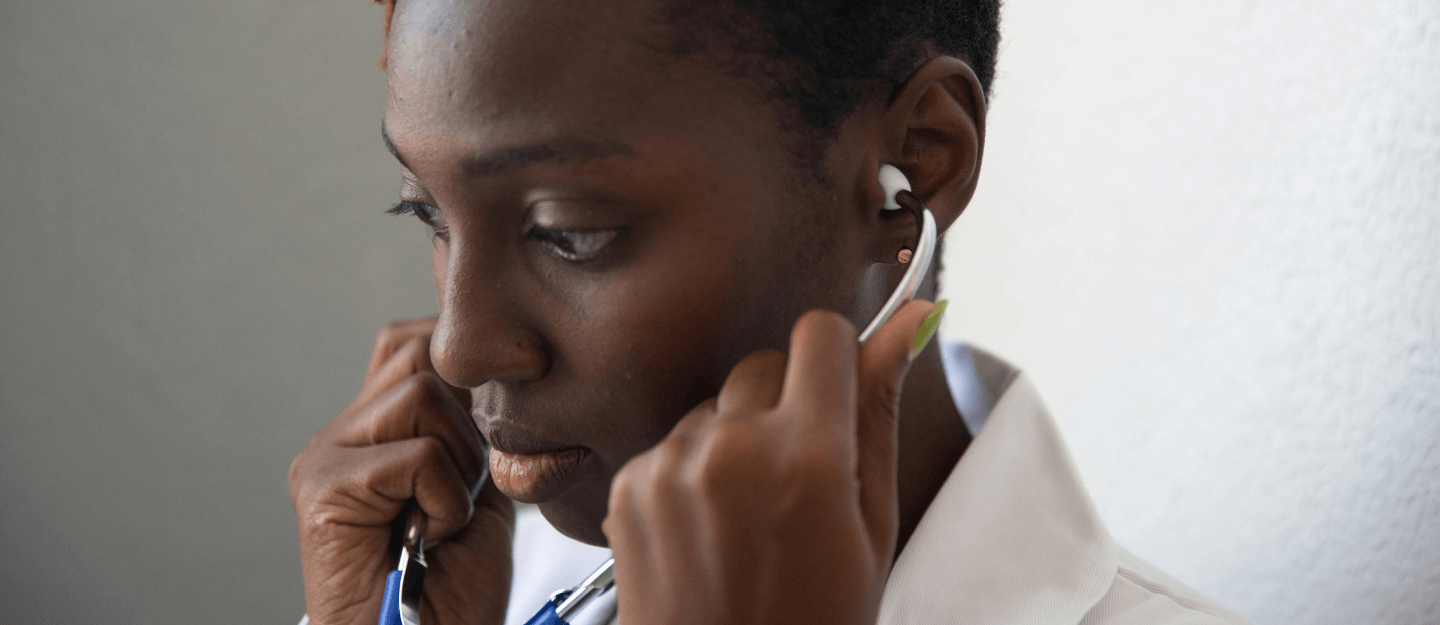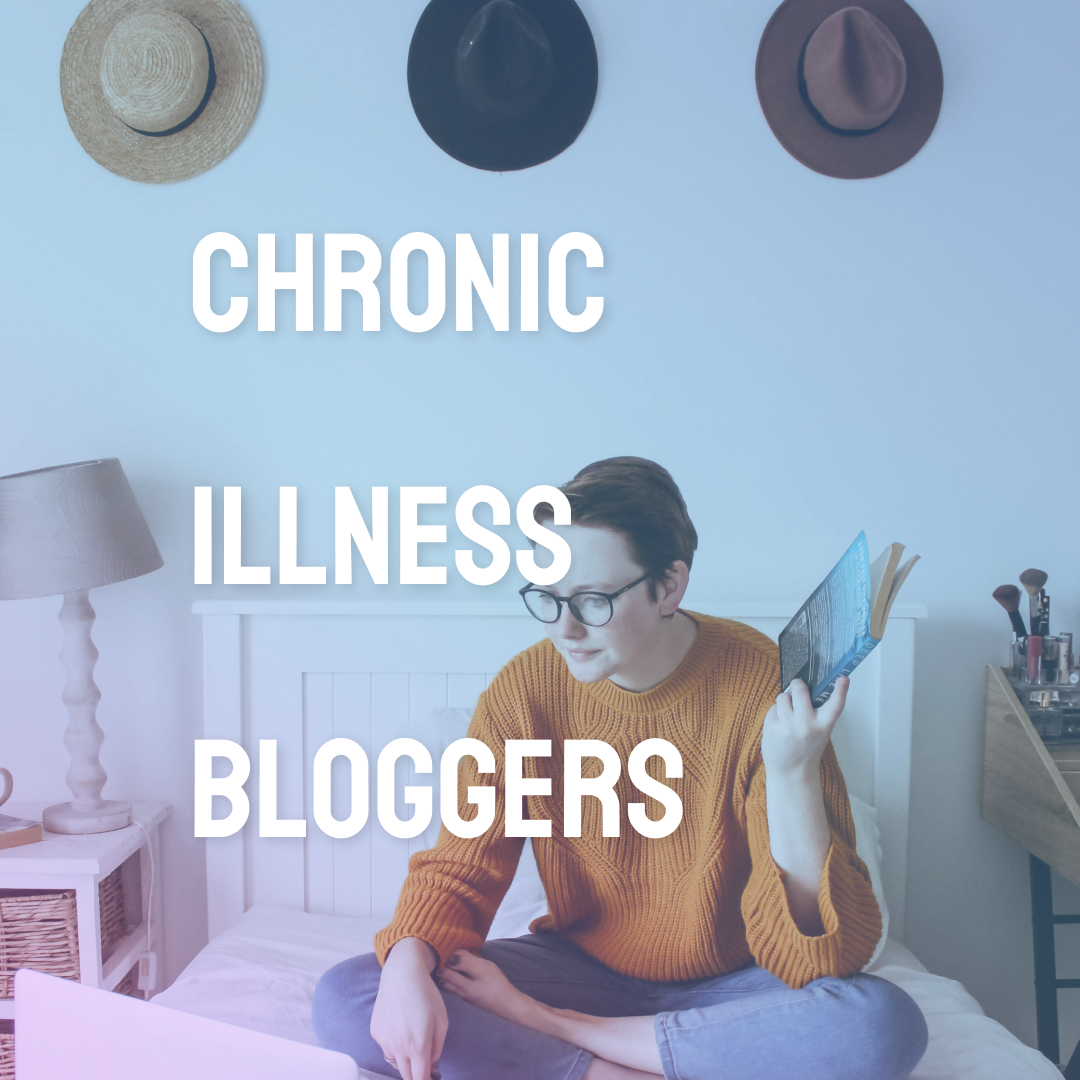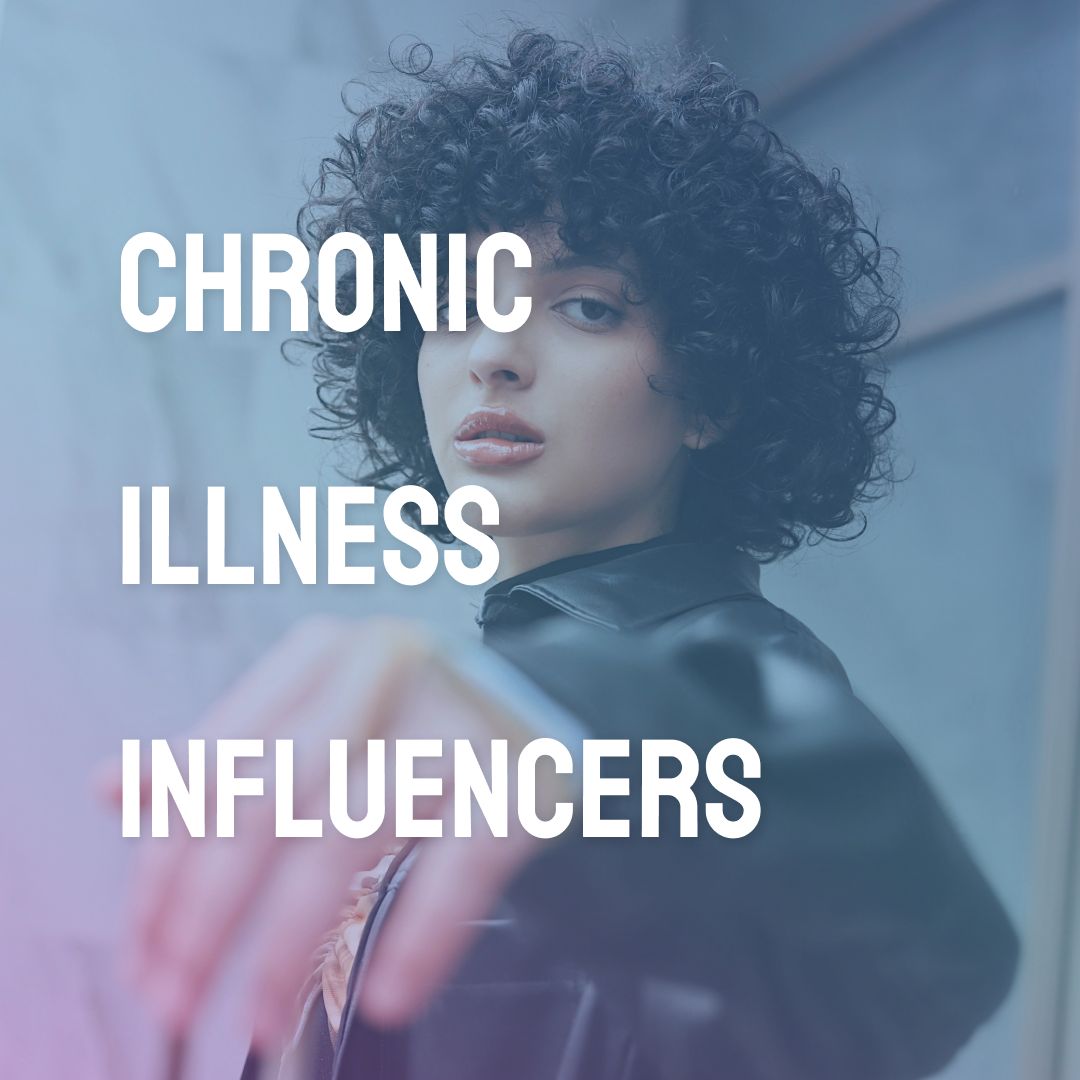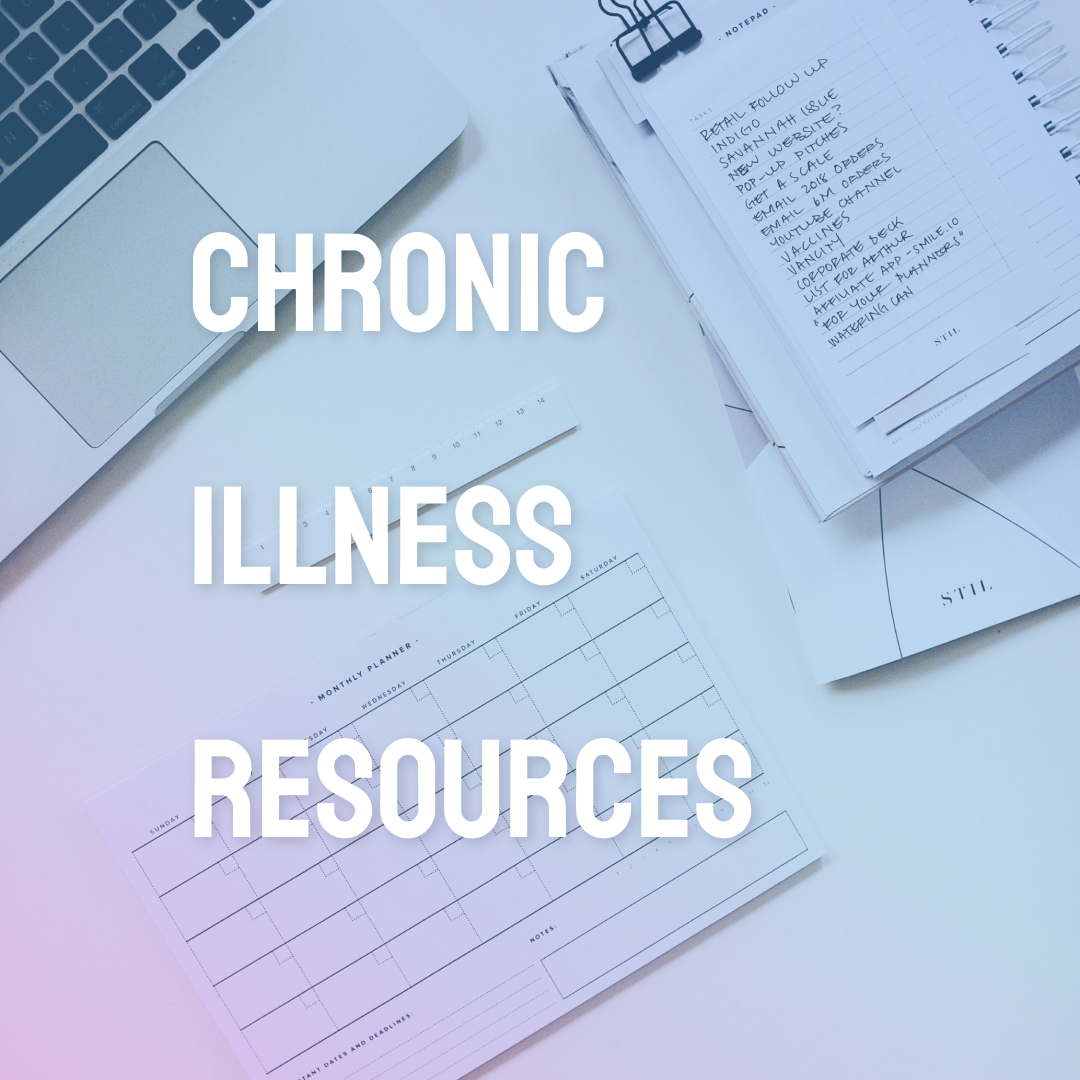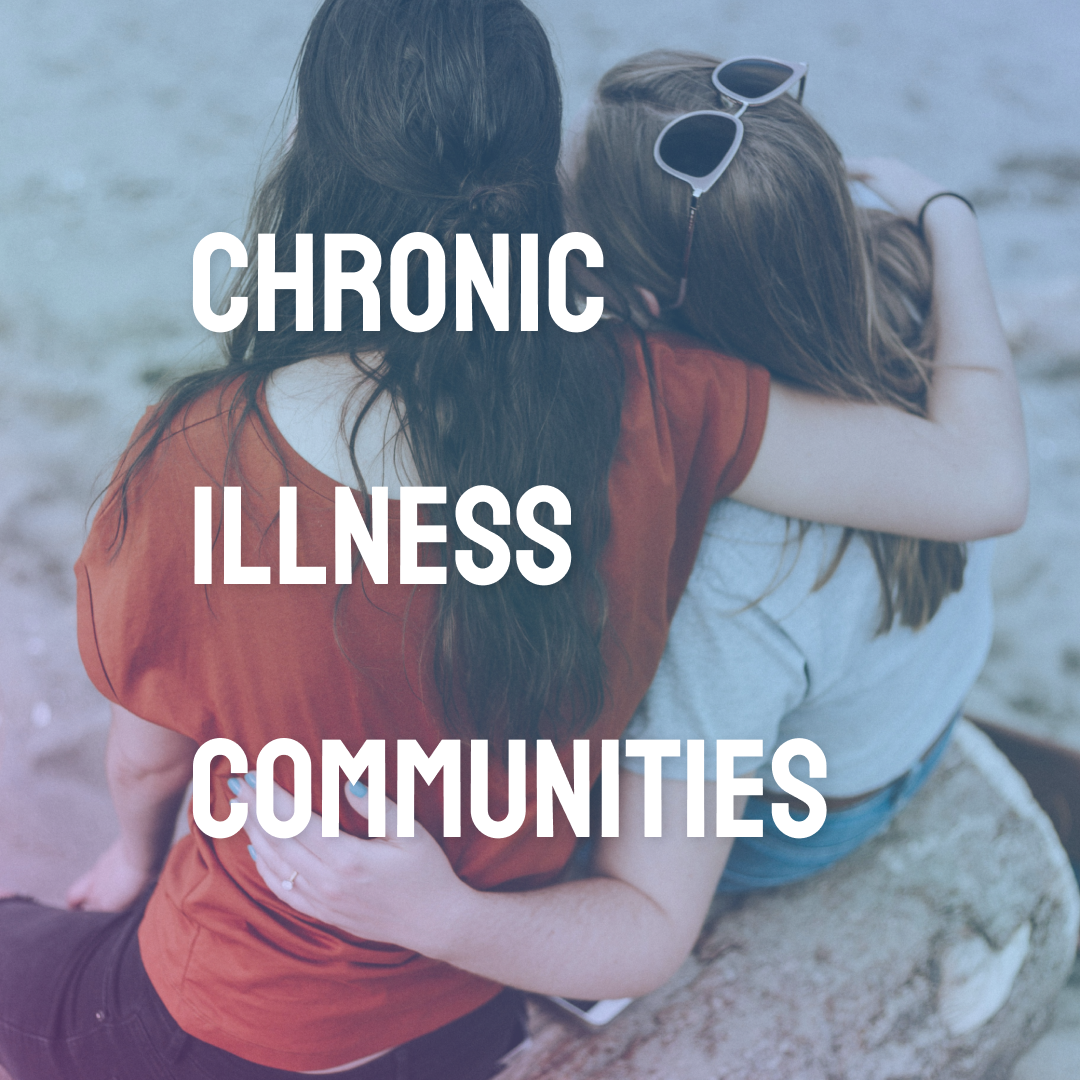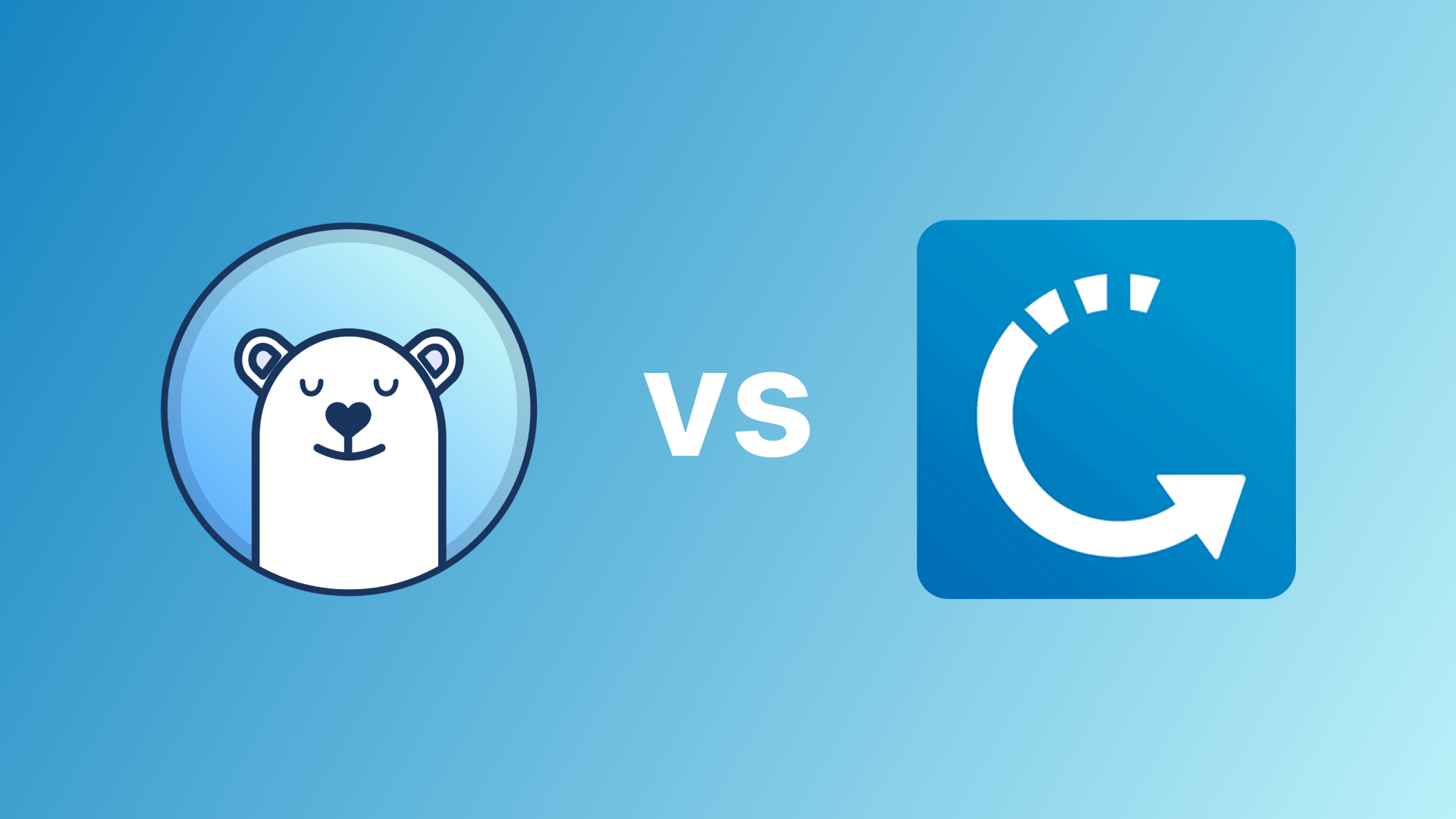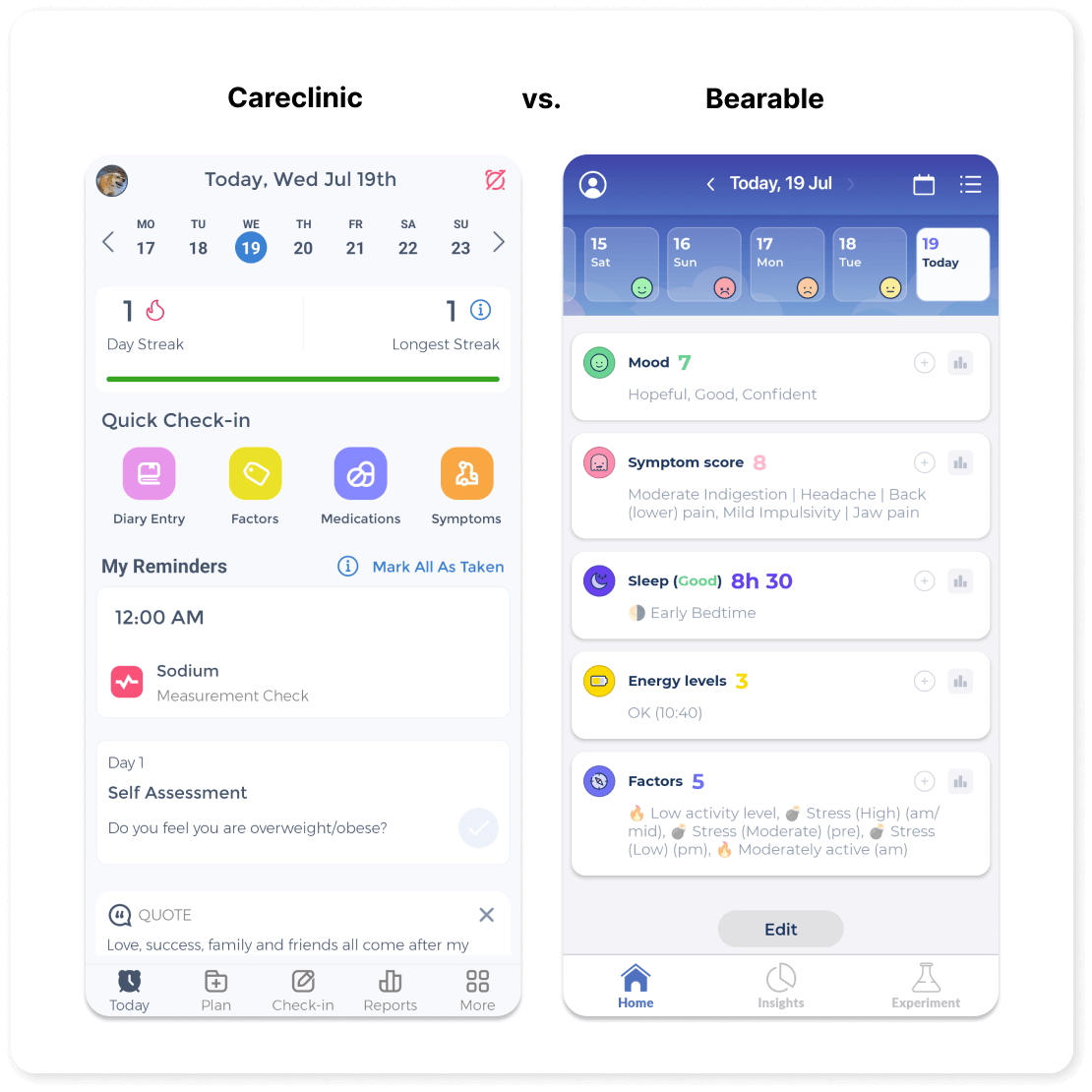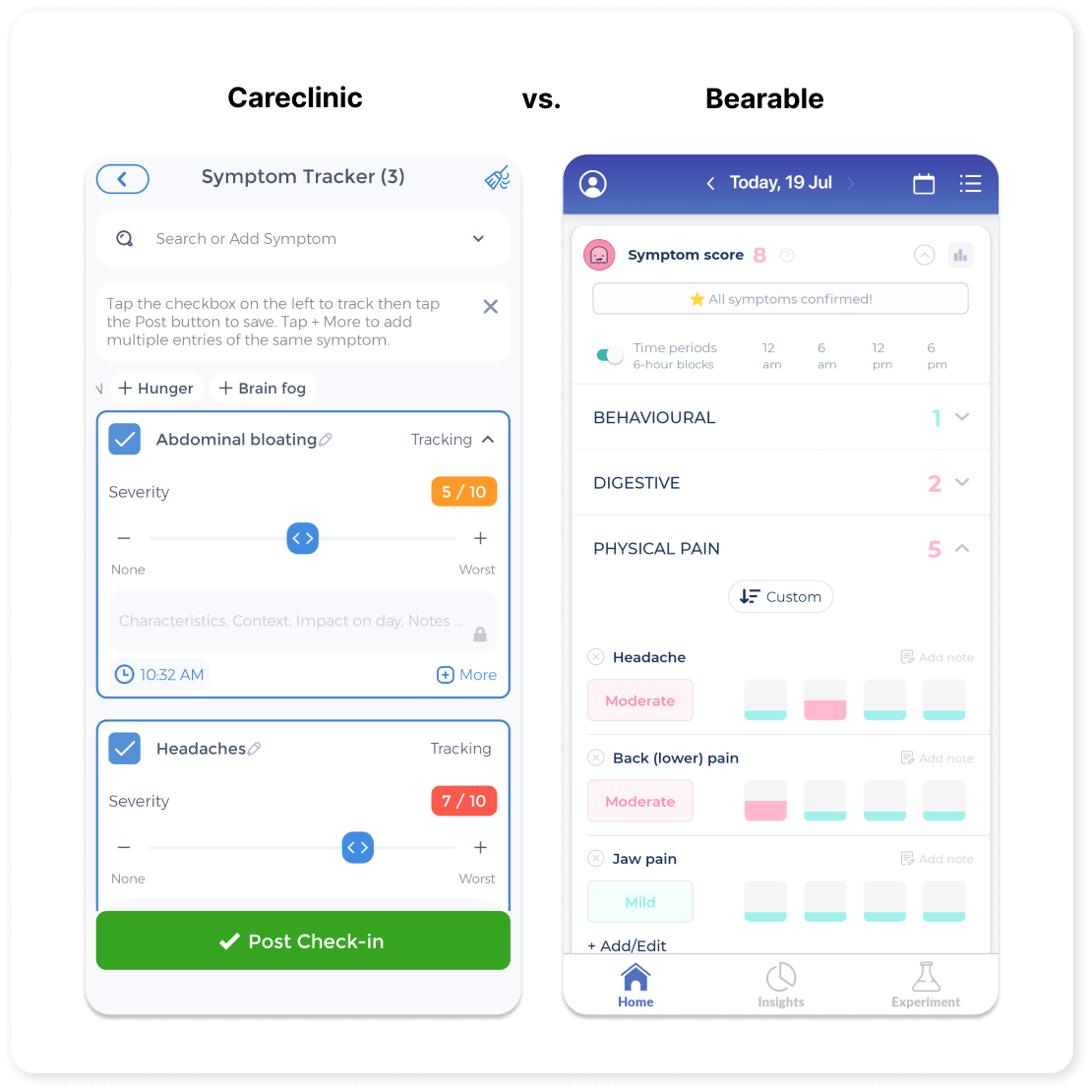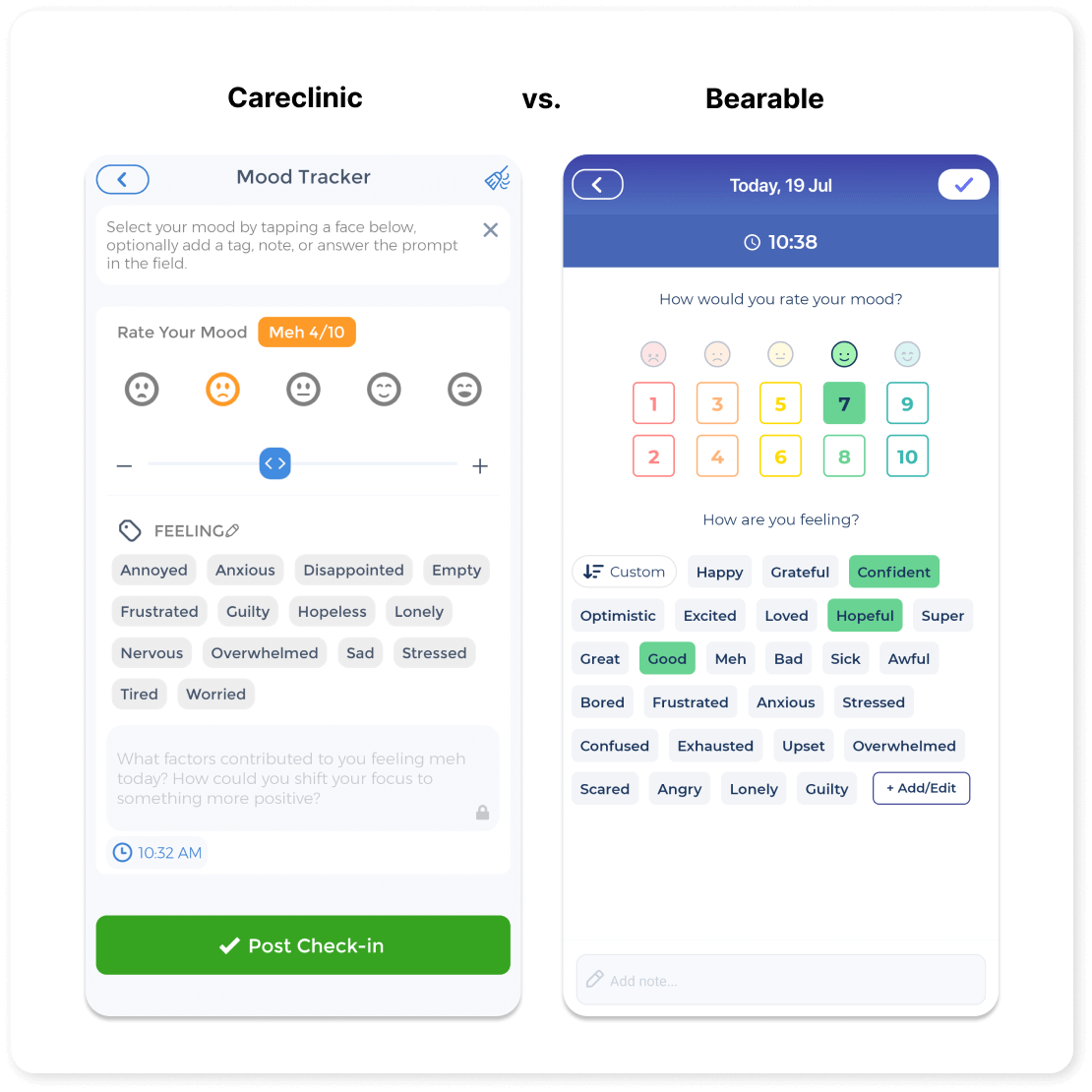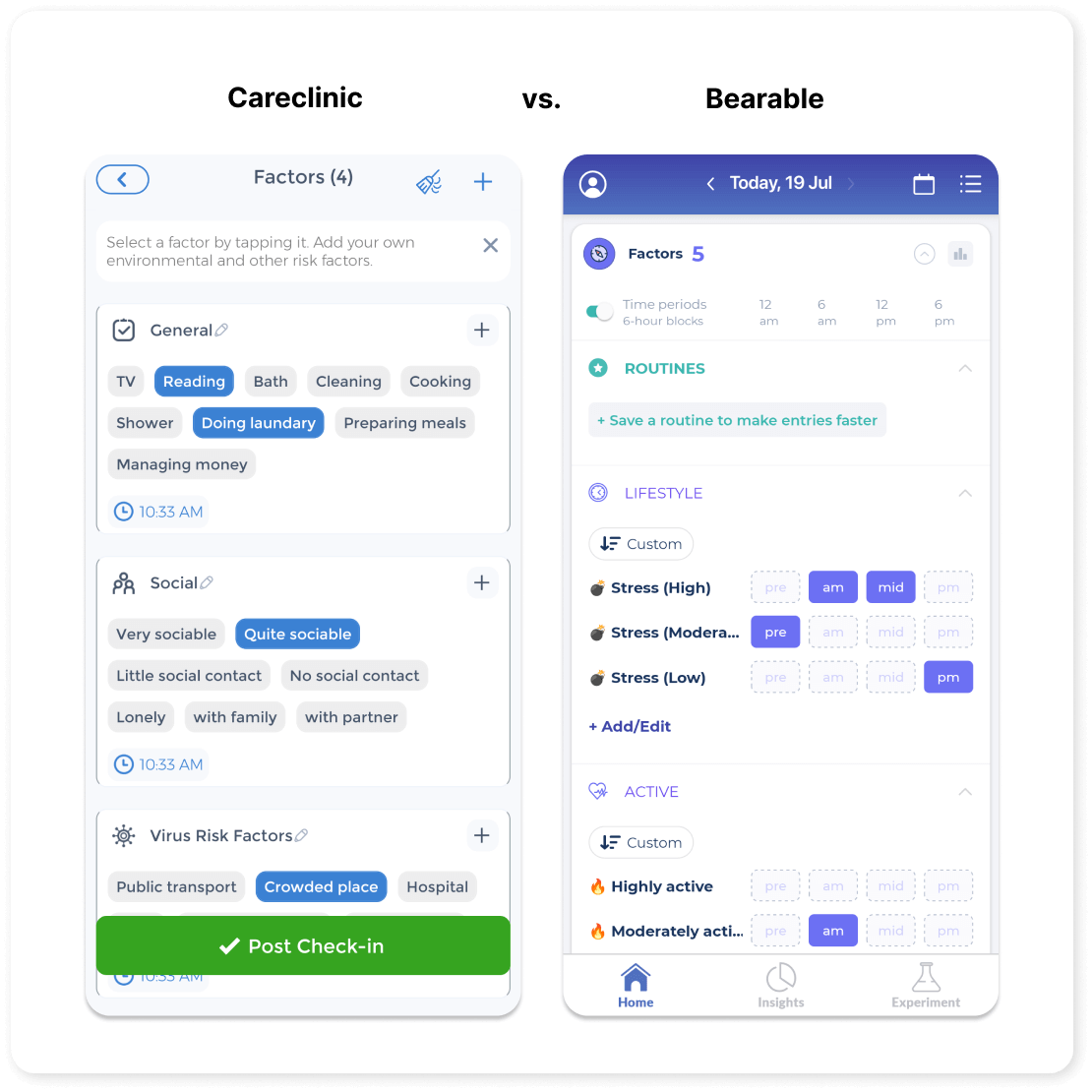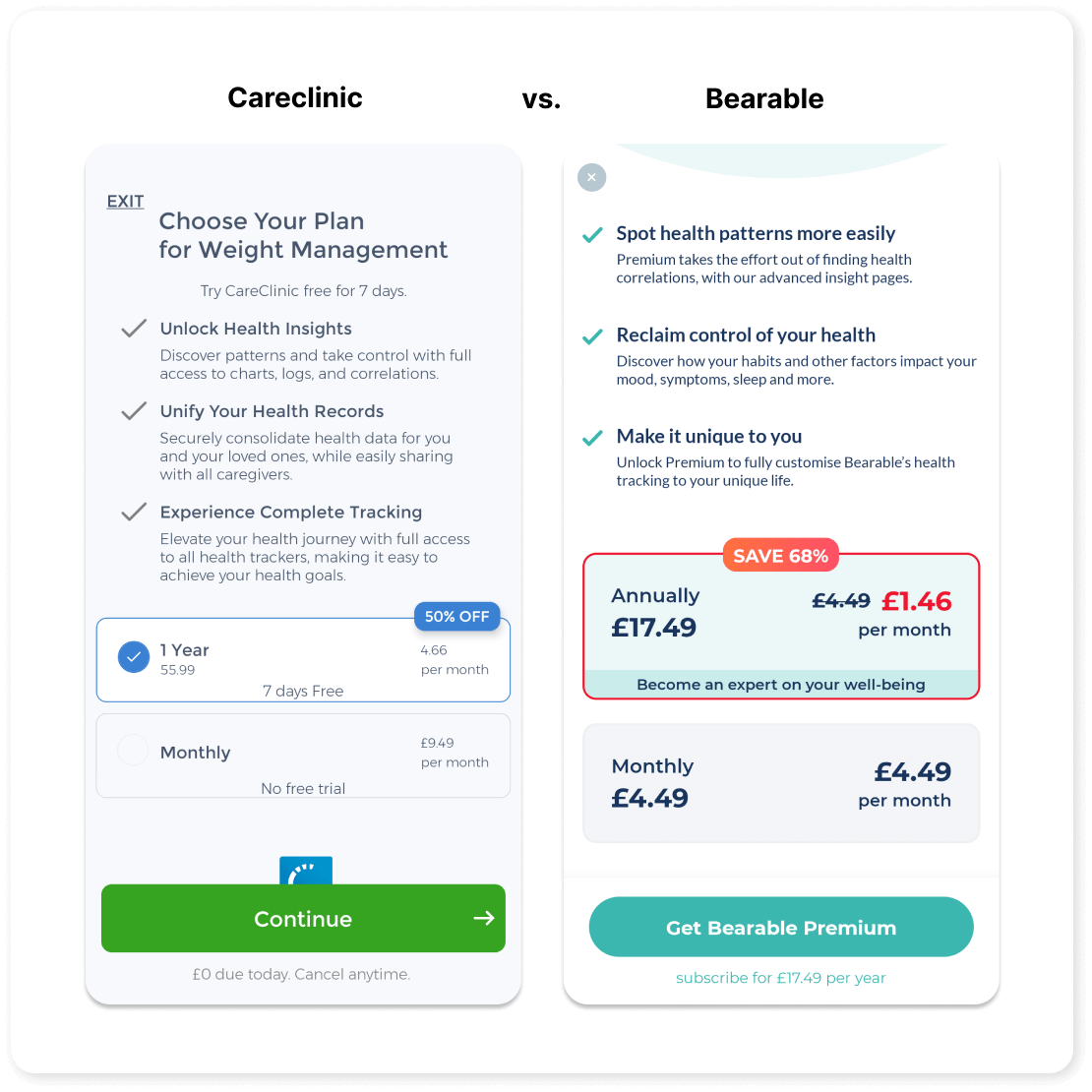
Allergy Tracker App
The best apps for tracking allergies in 2025
Published on March 31st 2025
Written by Jesse Driessen
Living with allergies—whether triggered by food, pollen, pet dander, or pollution—can make everyday life feel unpredictable. For the millions of people who suffer from seasonal allergies, food sensitivities, or chronic allergic conditions, tracking symptoms and exposures is not just helpful—it’s essential.
Allergy tracker apps offer a powerful way to stay ahead of triggers by logging what you eat, breathe, or touch, and how your body responds. By connecting these dots, these apps can help users gain control over symptoms, avoid flare-ups, and even improve their sleep, mood, and energy levels.
In 2025, with more advanced and intuitive options available than ever before, the right allergy tracker can be a game-changer in managing your health and reclaiming your day-to-day life.
How to choose the right allergy tracker app for you?
Choosing the right allergy tracker app starts with understanding your specific needs. Whether you’re tracking seasonal allergies, food sensitivities, or reactions to chemicals or pollution, the best app for you is one that aligns with your lifestyle and offers tools tailored to your condition.
Begin by identifying the type of allergies you need to track. Some apps specialize in environmental factors like pollen and air quality, while others offer detailed food and symptom logging. Look for apps that let you personalize what you track, from symptoms to environmental exposures, and ideally, offer insights based on your entries.
A clean, intuitive interface will make it easier to stick with your tracking routine, while compatibility with your smartphone or wearables can make syncing data seamless. Tracking allergens and symptoms consistently can lead to better management and reduced exposure, ultimately helping improve day-to-day quality of life.
Selecting an allergy tracker app: What should you look for?
When evaluating allergy tracker apps, prioritize features that support long-term symptom management. A good allergy app doesn’t just store data—it helps you make sense of it. Look for options that include comprehensive tracking across food, environmental triggers, symptoms, and medications.
A great app will analyze your logs to highlight trends and correlations, which can be shared with your healthcare provider to fine-tune treatment. Personalized notifications—like high pollen alerts or medication reminders—can help you take proactive steps to avoid reactions.
Choose an app with good reviews and evidence of consistent updates, which signals reliability and developer support. Understanding your triggers and tracking exposure is one of the most effective ways to manage chronic allergy conditions and avoid complications like asthma or anaphylaxis.
How should you judge an allergy tracking app’s features?
The true value of an allergy tracker app lies in how well its features support personalized care. Start by judging the app’s accuracy—particularly if it integrates pollen, air quality, or environmental data from reliable sources like local weather services.
Assess how well it lets you customize entries to fit your symptoms and allergen profile. Can you log what matters most to you—like fatigue, digestive symptoms, or skin reactions? Does it allow you to export your data for clinical use? A good app should also feel easy to use.
If logging symptoms or reviewing insights feels like a chore, you’re less likely to keep using it consistently—which reduces its effectiveness. Consistent allergy tracking can be a key part of long-term allergy control and can help identify lesser-known triggers that may not be obvious without regular logging
How can I ensure that my health data is safe in an allergy tracker app?
Keeping your health data secure is just as important as the information you’re tracking. Before downloading any allergy app, review its privacy policy to understand how your data is collected, used, and shared.
Opt for apps that use end-to-end encryption and store data securely—especially if you’re logging sensitive health details or medical history. You should be able to use the app without sharing personally identifiable information unless necessary, and it should give you control over permissions like location tracking or health data sharing.
Reputable apps will also make it clear if your data is anonymized or used for research – usually in their privacy policy. But if you’re unsure, websites like Mozilla’s Privacy Not Included offer tools to help you identify if a specific health app is sharing your data or not.
What are the must-have features for an allergy tracker app?
The most useful allergy tracker apps in 2025 come equipped with a few must-have features that go beyond simple logging. At their core, these apps should offer the ability to track symptoms, triggers, medications, and environmental exposures like pollen and air quality.
Personalized insights—such as identifying correlations between symptoms and allergens—can help users understand their condition better over time. Integration with weather data and wearable devices adds another layer of utility, offering real-time alerts and health summaries.
Medication tracking and reminders can help improve treatment adherence, while the option to export data or generate reports is invaluable for clinical visits. Apps that support symptom awareness and provide tools for active management can reduce complications and enhance a person’s quality of life.
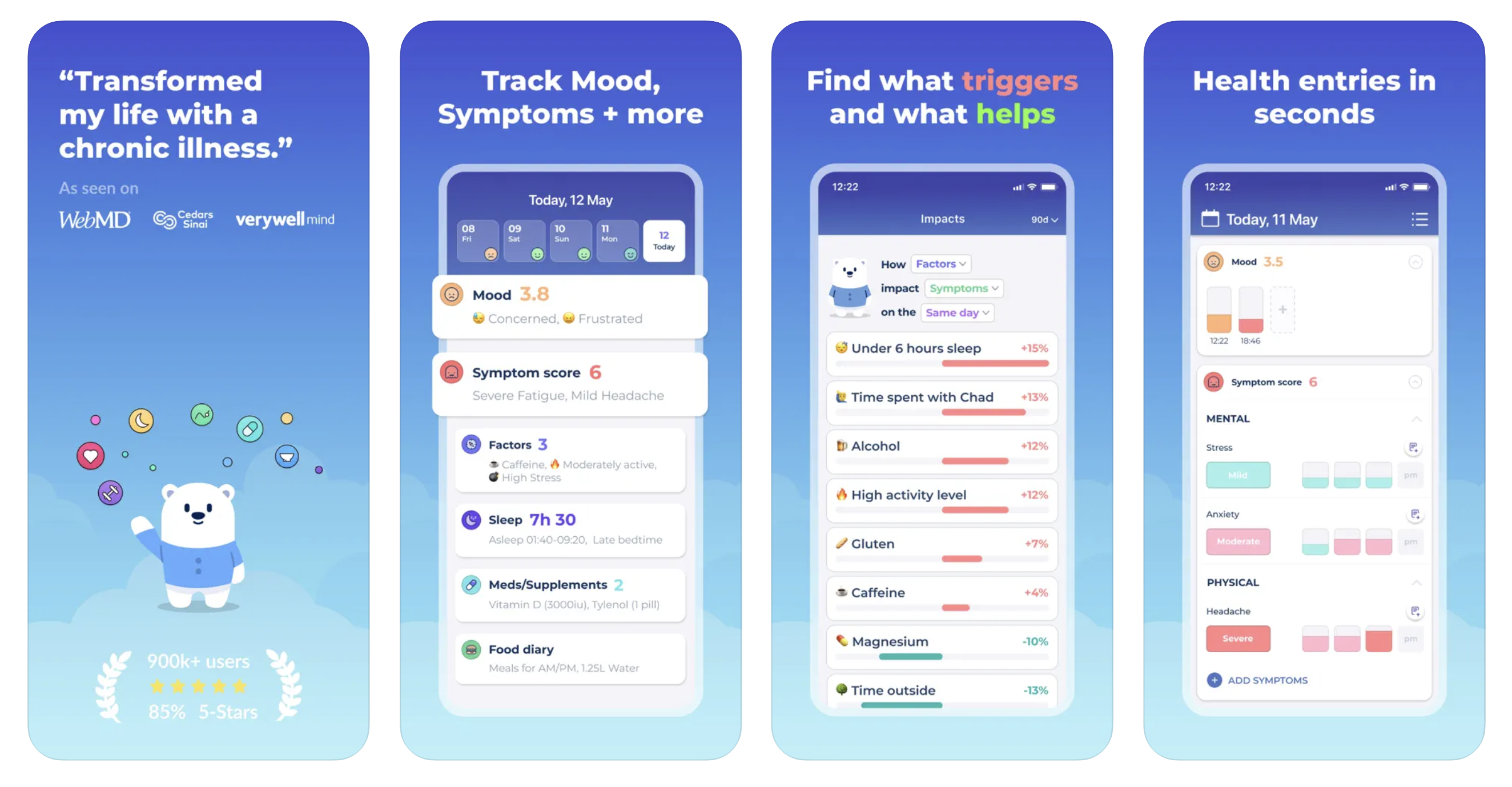
Bearable - Symptom & Mood Tracker
The best all-round allergy tracker app
Bearable is a versatile health tracking app that enables users to monitor a wide range of factors, including both food, environmental, pet, and other allergens. Its customizable interface allows for detailed tracking of symptoms, medication, mood, sleep, and energy levels, helping users identify patterns and correlations between allergen exposure and overall health and well-being. Whether it’s pollen, specific foods, weather conditions, medications, latex, or animals, Bearable connects the dots between allergens and how they affect your quality of life.
Pros:
- User-friendly interface
- Highly customizable tracking options
- Track environmental, food, air quality, medication, and animal allergen triggers
- View correlations with exposure and changes in allergen symptoms
- Comprehensive health insights beyond allergies
- Stores your data in an encrypted format in the EU
- Does not have to comply with US subpoenas requesting health data
- Recommended by Doctors and Therapists
- Clinically reviewed
Cons:
- Requires consistent data entry for optimal results
- Some advanced features may require a subscription
Average rating.
- Apple App Store: 4.7 stars
- Google Play Store: 4.6 stars
Best for. Tracking a wide array of allergens, including food, environmental triggers, animals, and weather.





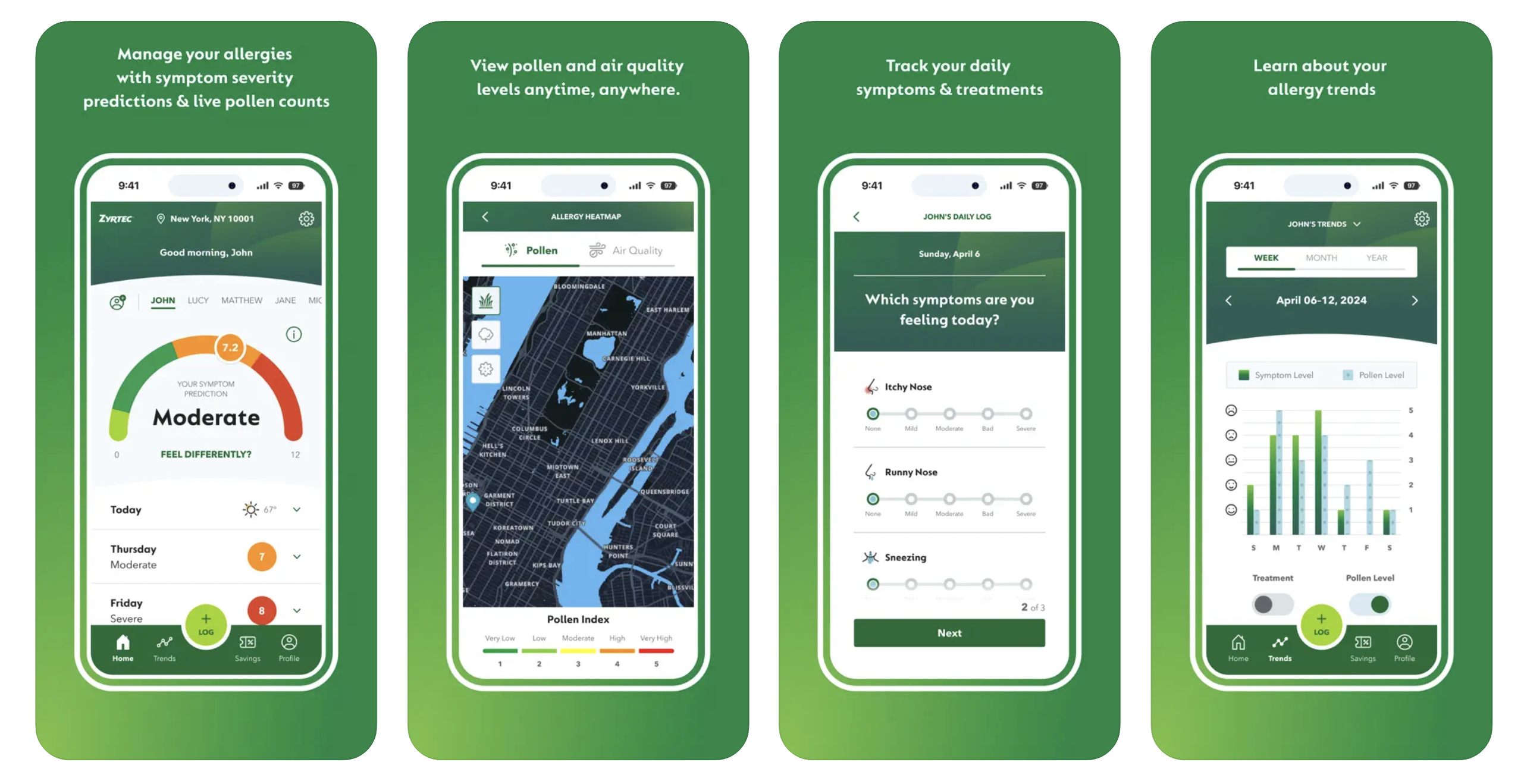
ZYRTEC® AllergyCast®
Best for real-time pollen tracking and allergy forecasts
ZYRTEC® AllergyCast® gives users access to personalized pollen forecasts and symptom predictions based on location and current pollen levels. Its real-feel allergy forecast helps users understand how they might physically react to outdoor conditions, and multi-day outlooks make it easier to plan activities.
Pros:
- Personalized symptom predictions
- Comprehensive weather and pollen forecasts
- Can track multiple user profiles
Cons:
- Primarily focused on environmental allergens
- Some data inaccuracies reported during peak seasons
Average rating.
- Apple App Store: 4.8 stars
Google Play Store: 4.6 stars
Best For. Tracking Pollen and seasonal environmental allergens.
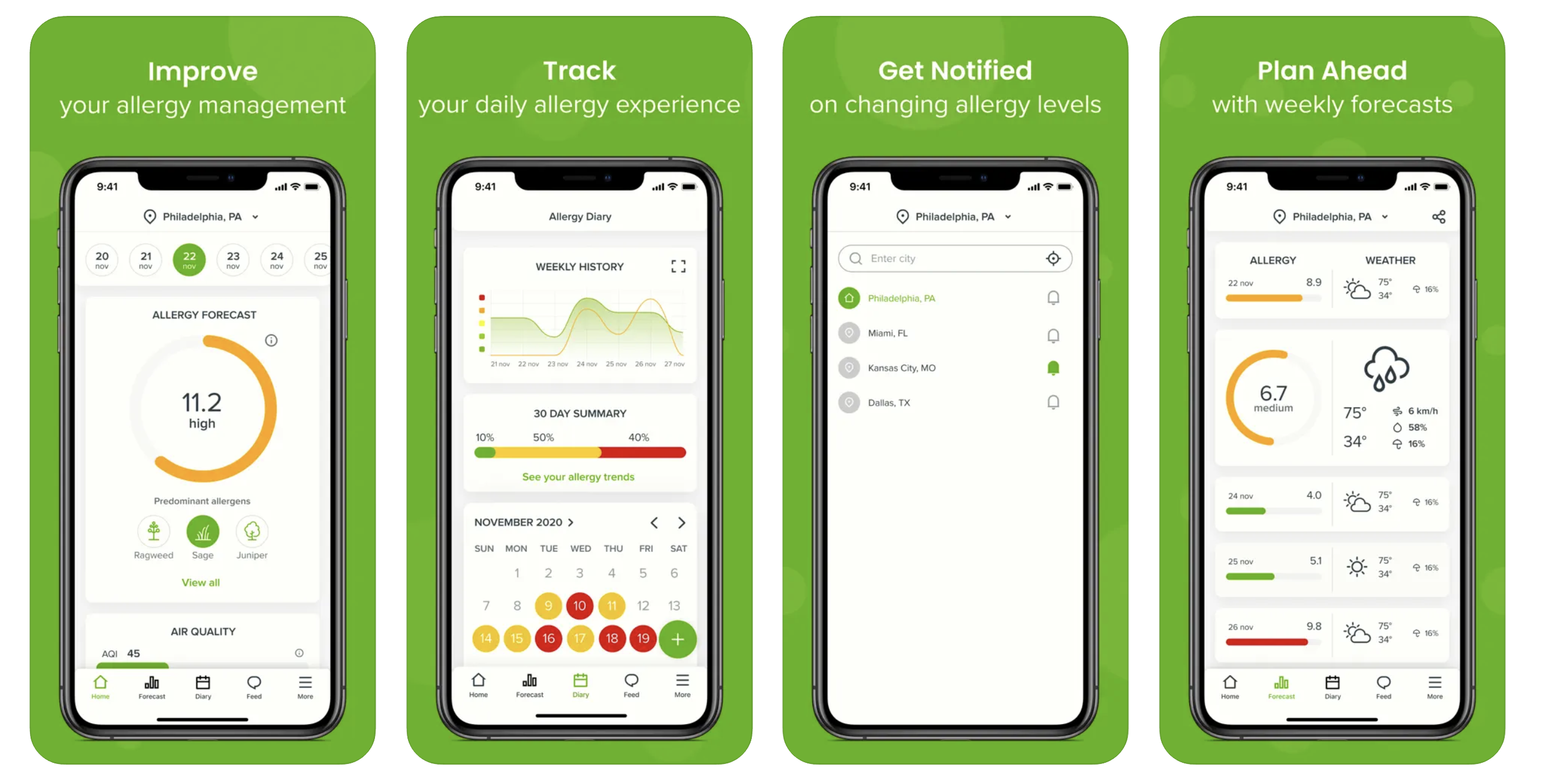
Allergy Plus by Pollen.com
Best for localized pollen data and symptom journaling
Allergy Plus offers location-specific allergy forecasts alongside a five-day outlook and an integrated symptom diary. It’s designed to help users make connections between environmental conditions and how they feel, supporting better decision-making around daily activities.
Pros:
- Location-based pollen data
- Built-in allergy diary
- Simple, intuitive interface
Cons:
- Limited food allergy tracking
- Occasional app performance issues
Average rating.
- Apple App Store: 4.5 stars
- Google Play Store: 4.3 stars
Best For. Tracking environmental allergens like pollen, mold, and dust.
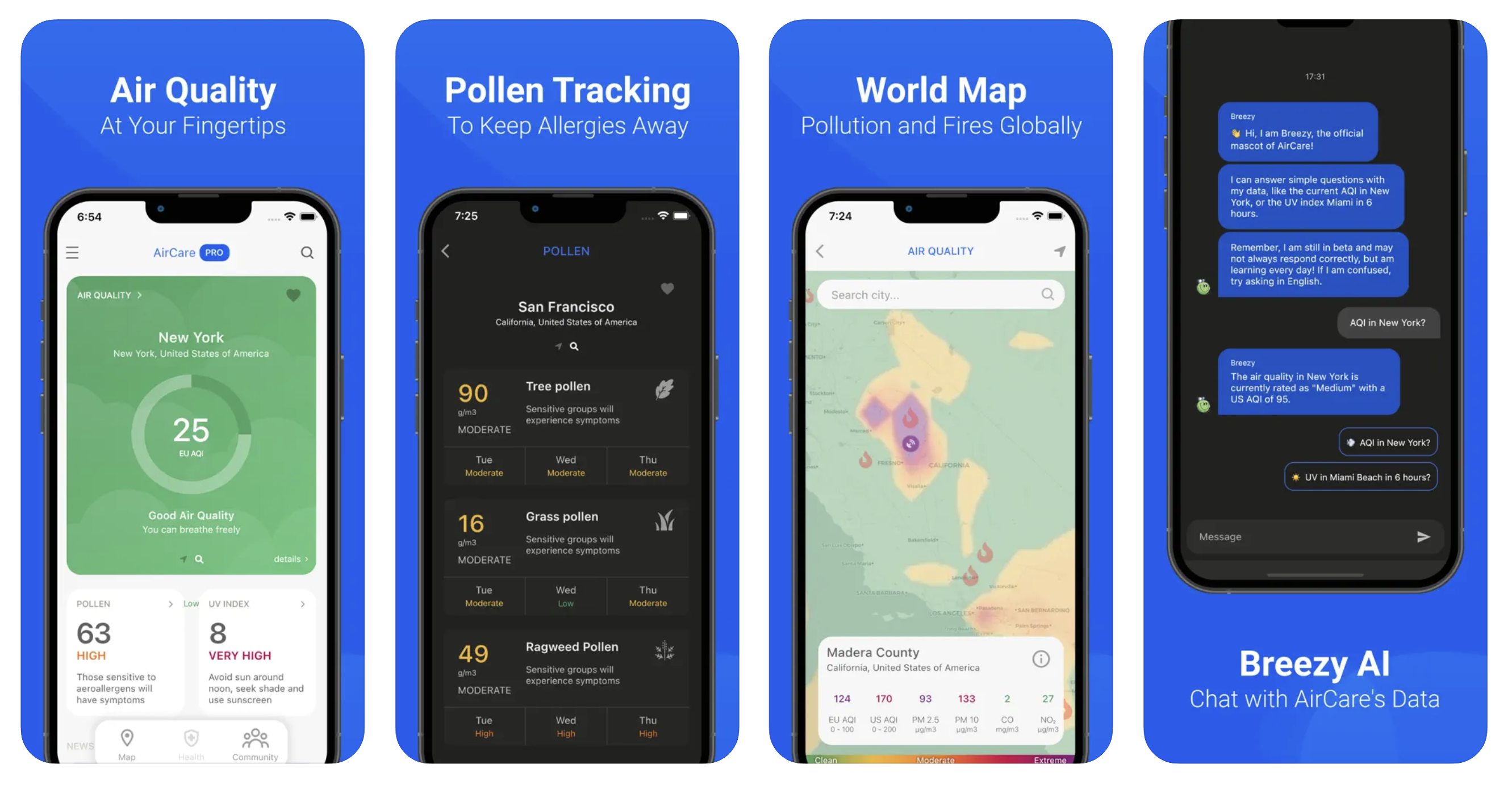
AirCare
Best for comprehensive environmental monitoring
AirCare is an award-winning application that offers real-time data on air quality, pollen counts, UV index, and fire hotspots. Utilizing data from multiple sources, including satellites and ground stations, AirCare provides accurate and up-to-date information to help users make informed decisions about outdoor activities. Its user-friendly interface and comprehensive environmental monitoring make it a valuable tool for individuals sensitive to environmental allergens.
Pros:
- Real-time air quality and pollen data
- Comprehensive environmental monitoring
- User-friendly interface
Cons:
- Some features require a subscription
- Widgets are not available in the free version
Average ratings.
- Apple App Store: 4.7 stars
- Google Play Store: 4.6 stars
Best For. Tracking environmental allergens, including pollen and air pollutants.
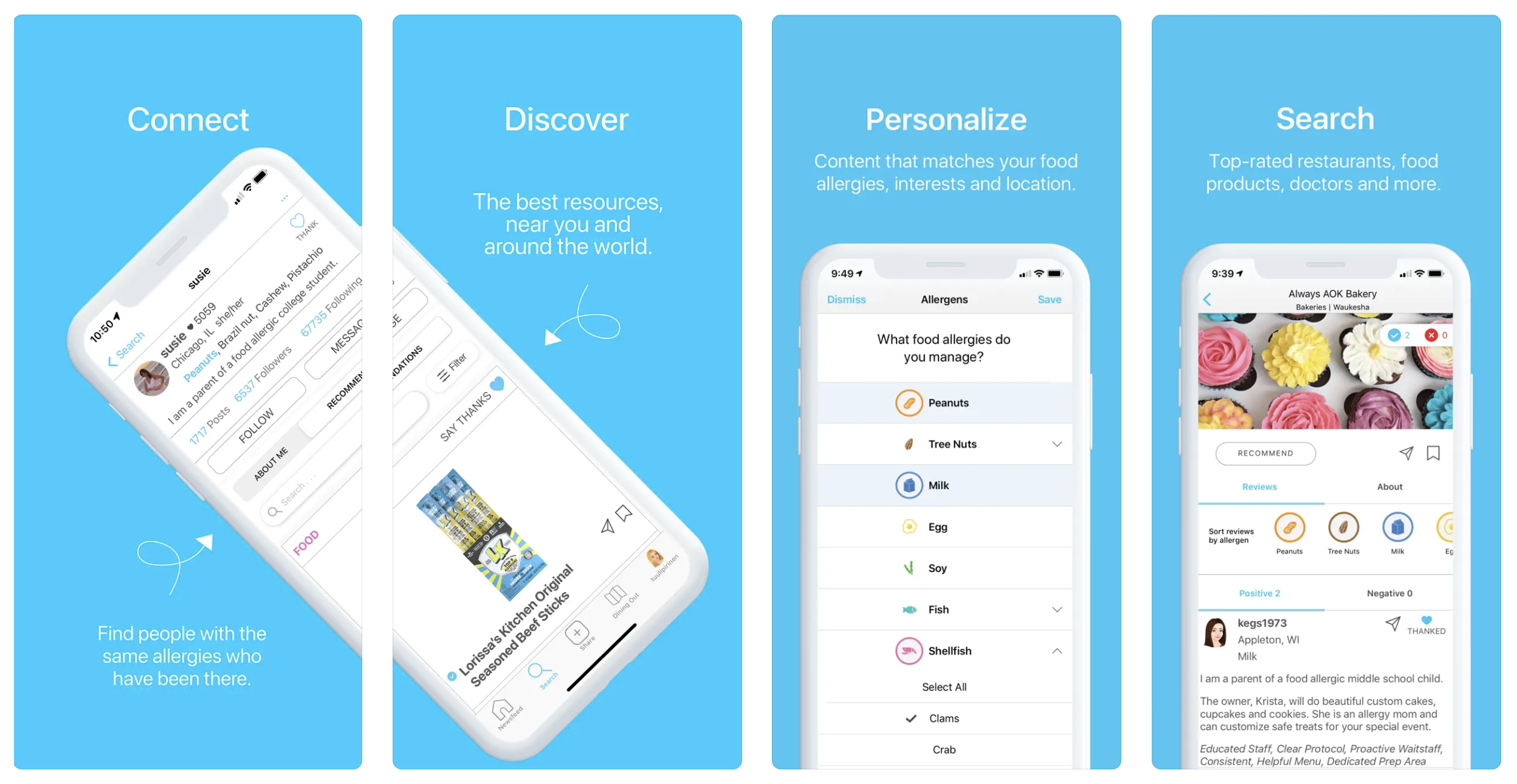
Spokin
Best app for managing food allergies and finding safe places to eat
If you’re living with food allergies or caring for someone who is, Spokin is one of the most trusted apps on the market. Designed specifically to help users navigate the world with food allergies, Spokin offers a powerful mix of tools—from personalized restaurant recommendations and product reviews to curated travel guides and allergy-friendly recipes. What sets Spokin apart is its community-driven database, which lets users filter based on 80+ allergens and read reviews from people with similar dietary restrictions. Whether you’re allergic to peanuts, dairy, gluten, or something more niche like sesame or sulfites, Spokin helps take the guesswork out of where to eat and what to buy.
Pros.
- Tailored recommendations based on your specific allergens
- Trusted reviews from other allergy-conscious users
- Helpful for dining out, grocery shopping, and travel
Cons.
- Focused primarily on food-related allergies (not environmental)
- Some content may be limited without creating a free account
Average ratings.
- Apple App Store: ★ 4.8
- Google Play Store: ★ 4.7
Best For. Tracking food allergies, ingredient sensitivities, and safe dining options.
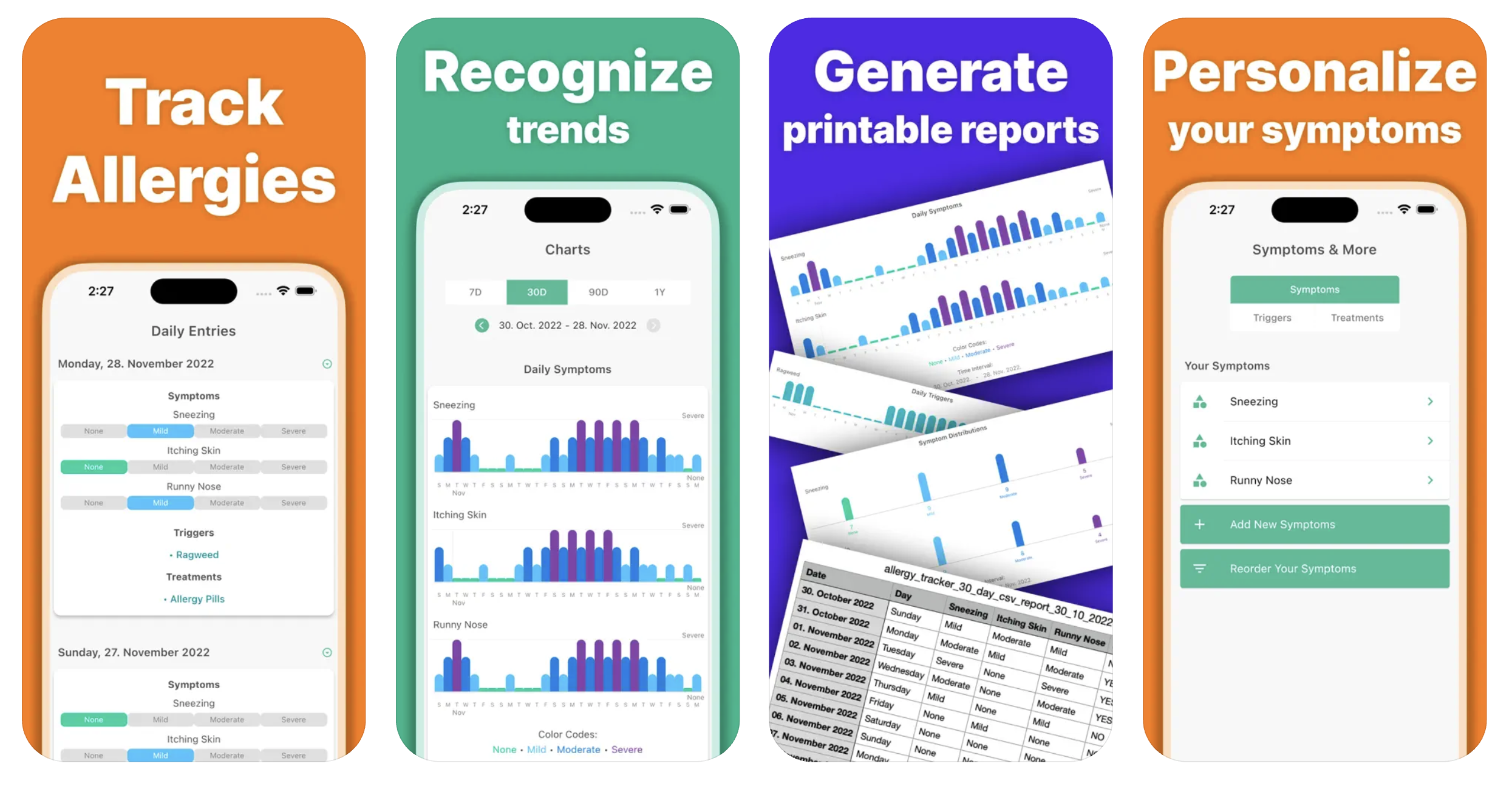
Allergy Tracker°
Best for customizable treatment tracking
Allergy Tracker° is a comprehensive tool that allows users to monitor their allergy symptoms, identify triggers, and track treatments. The app offers customizable features, enabling users to define their own symptoms and treatments, and provides visualizations to recognize patterns over time. Users can generate printable reports to share with healthcare providers, facilitating better communication and management of allergies.
Pros.
- Customizable treatment tracking
- Data visualizations
- Generating reports
Cons.
- Limited to one entry per day
- Some features may require in-app purchases
- Limited number of reviews on the App Store
Average Ratings.
- Apple App Store: 4.4 stars
Best For. Tracking personalized allergy treatments.
Our final thoughts on choosing an Allergy App
Selecting the right allergy tracker app is a personal journey that hinges on understanding your unique needs and lifestyle. With a plethora of options available, it’s essential to prioritize features that align with your specific allergies—be it environmental factors like pollen and dust or food sensitivities.
An intuitive interface, personalized insights, and reliable data security are key elements to consider. By investing time in choosing an app that resonates with your daily routine and health objectives, you empower yourself to manage allergy symptoms more effectively, leading to an improved quality of life.
Feel more in control of your Allergies
🌻 Track unlimited environmental, food, and medicinal allergens.
🔫 Identify triggers for allergic reactions.
💊 Monitor the impact and side effects of allergen medication.
👩🏽⚕️ Communicate more easily with your doctor.
💪 Feel more in control of your health.
Everything that you need to know about allergies and allergens.
What is an allergy?
An allergy is an immune system reaction to a substance that is typically harmless to most people. These substances, known as allergens, can include pollen, dust mites, mold spores, pet dander, insect stings, certain foods, and medications. When exposed to an allergen, the immune system mistakenly identifies it as harmful and releases chemicals like histamine, leading to allergic reactions.
How can I differentiate between allergies and a common cold?
Allergies and colds share similar symptoms, such as sneezing, congestion, and runny nose. However, allergies often include itching in the eyes or nose and occur suddenly upon exposure to allergens, persisting as long as the exposure continues. Colds may develop gradually, include body aches or fever, and typically resolve within 7-10 days.
What are the most common allergens?
The most common allergens fall into a few major categories—environmental, food, insect, and medication-related—and they’re responsible for the majority of allergic reactions in both children and adults.
Environmental allergens include airborne triggers like pollen from trees, grasses, and weeds, as well as indoor allergens such as dust mites, pet dander, and mold spores. These are particularly common in seasonal allergies and can lead to symptoms like sneezing, nasal congestion, itchy eyes, and asthma flare-ups.
Food allergies, on the other hand, are often caused by eight primary culprits: milk, eggs, peanuts, tree nuts (like almonds or walnuts), soy, wheat, fish, and shellfish—plus sesame, which was recently added as a major allergen under U.S. food labeling laws. These can trigger symptoms ranging from mild hives or stomach upset to severe anaphylaxis. Insect stings (such as from bees or wasps).
Certain medications (including penicillin or aspirin), and latex are also well-documented sources of allergic reactions. Understanding these common allergens is essential for diagnosis, prevention, and treatment.
How is an allergy diagnosed?
Diagnosing allergies involves a comprehensive approach that includes a detailed medical history, physical examination, and specific diagnostic tests. Healthcare providers begin by discussing your symptoms, their frequency, duration, and any potential triggers you’ve noticed. This conversation helps identify patterns and possible allergens.
During the physical exam, the doctor may assess your skin, eyes, nose, throat, and lungs for signs indicative of allergic reactions. To pinpoint specific allergens, skin prick tests are commonly employed. In this procedure, small amounts of suspected allergens are introduced into the skin, typically on the forearm or back, and the area is observed for reactions such as redness or swelling.
Alternatively, blood tests may be conducted to measure the presence of allergen-specific antibodies, known as Immunoglobulin E (IgE), in your bloodstream. For suspected food allergies, an elimination diet might be recommended, involving the removal of certain foods from your diet and systematically reintroducing them while monitoring for adverse reactions.
These diagnostic methods, when combined, provide a thorough understanding of your allergic sensitivities, enabling the development of an effective management plan tailored to your needs.
What treatments are available for allergies?
Managing allergies effectively involves a multifaceted approach tailored to individual triggers and symptoms. The primary strategy is avoidance, which entails minimizing exposure to known allergens. For instance, individuals allergic to pollen might stay indoors during high pollen counts, while those with dust mite sensitivities can benefit from using allergen-proof bedding and maintaining a clean environment.
When avoidance isn’t sufficient, various medications can help alleviate symptoms. Antihistamines are commonly used to reduce sneezing, itching, and runny nose by blocking histamine, a chemical involved in allergic reactions. Decongestants can relieve nasal congestion, improving breathing comfort. Nasal corticosteroids are effective in reducing inflammation and treating nasal symptoms. Additionally, leukotriene inhibitors may be prescribed to block leukotrienes, substances that cause allergy symptoms.
For individuals with severe or persistent allergies, immunotherapy offers a long-term solution. This treatment involves administering gradually increasing doses of allergens through injections or sublingual tablets, aiming to desensitize the immune system over time. Consulting with a healthcare provider is essential to determine the most appropriate treatment plan based on individual needs and medical history.
Can allergies be cured?
While allergies can’t be cured in the traditional sense, they can be effectively managed—and in some cases, symptoms can be significantly reduced or even eliminated over time with the right treatment. Allergies occur when the immune system overreacts to a harmless substance, and this hypersensitivity doesn’t typically go away entirely. However, many people find long-term relief through treatments like immunotherapy, which involves regular exposure to small, controlled amounts of allergens through allergy shots or sublingual tablets. Over time, this can help retrain the immune system to become less reactive, reducing the severity and frequency of allergic responses. According to the Mayo Clinic, immunotherapy is especially effective for environmental allergens like pollen, mold, dust mites, and pet dander.
Even without a cure, managing allergy symptoms is very achievable. This typically includes a combination of avoidance strategies, such as limiting exposure to known allergens, and medications like antihistamines, decongestants, or nasal corticosteroids to control symptoms. Tracking your symptoms with an allergy app can also help you identify patterns and triggers, allowing for better daily decisions and fewer flare-ups. While a complete cure may not be possible for most, effective allergy management can dramatically improve your quality of life—helping you sleep better, stay more active, and feel more in control of your health.
How can I prevent allergic reactions?
Preventing allergic reactions involves proactive strategies tailored to minimize exposure to known allergens. For environmental allergens like pollen and dust mites, implementing measures such as using air purifiers, keeping windows closed during high pollen seasons, and maintaining a clean living space can significantly reduce allergen presence.
When dealing with food allergies, meticulous attention to dietary habits is crucial; this includes reading food labels thoroughly and avoiding consumption of known allergens. Personal care practices also play a vital role; washing hands after contact with pets, opting for hypoallergenic bedding, and steering clear of identified triggers can further mitigate the risk of reactions. By integrating these approaches into daily routines, individuals can effectively manage their allergies and enhance their overall well-being.
Is it possible to develop allergies later in life?
Yes, allergies can develop at any age, even in individuals who previously had no allergic reactions. Factors such as environmental changes, new exposures, and genetic predisposition can contribute to the onset of allergies in adulthood.
What is anaphylaxis, and how is it treated?
Anaphylaxis is a severe, potentially life-threatening allergic reaction that requires immediate medical attention. Symptoms can include difficulty breathing, rapid pulse, and a drop in blood pressure. Treatment involves the prompt administration of epinephrine and seeking emergency medical care. Mayo Clinic
How can I track and manage my allergy symptoms effectively?
Utilizing allergy tracking apps can help monitor symptoms, identify triggers, and manage exposure. Apps like Bearable allow users to track environmental and food allergens, observe their impact on symptoms, mood, sleep, and energy, and customize tracking to individual needs. This comprehensive approach aids in understanding and managing allergies more effectively. By staying informed and proactive, individuals can better navigate the challenges of allergies and improve their overall well-being.
Sources used to create this article
The Allergy and Asthma Network’s Complete Guide to Allergies.
https://allergyasthmanetwork.org/allergies/
The Cleveland Clinic’s Guide to Allergies.
https://my.clevelandclinic.org/health/diseases/8610-allergies
Allergy UK’s Resources Pages.
https://www.allergyuk.org/resources/allergy-uk-patient-charter/
The American Academy of Allergens, Asthma, and Immunology’s guide to mHealth.
https://www.aaaai.org/allergist-resources/digital-medicine-ehr/mhealth?
Penn Medicine’s article about Adult Onset Allergies.
https://www.pennmedicine.org/news/news-blog/2023/march/adult-onset-allergies-how-they-happen-and-how-to-manage-them?
WebMD’s guide to using a Diary for identifying allergy triggers.
https://www.webmd.com/allergies/food-diary-helping-uncover-food-allergy-triggers
The Mayo Clinic’s guide to Allergies.
https://www.mayoclinic.org/diseases-conditions/allergies/symptoms-causes/syc-20351497
The National Health Services’ (NHS) guide to Allergies.
https://www.nhs.uk/conditions/allergies/
The Asthma and Allergy Foundation of America.
https://aafa.org/allergies/allergy-diagnosis/
MedlinePlus’ information about treatments.
https://medlineplus.gov/lab-tests/allergy-blood-test/
National Library of Medicine’s academic study of the impact of allergies on quality of life.
https://pmc.ncbi.nlm.nih.gov/articles/PMC8511199/
North Alabama ENT’s Allergy Symptom Tracking advice.
https://nalent.com/the-allergy-journal-why-tracking-your-symptoms-is-a-game-changer/







